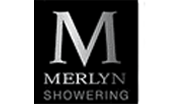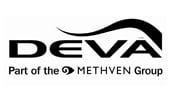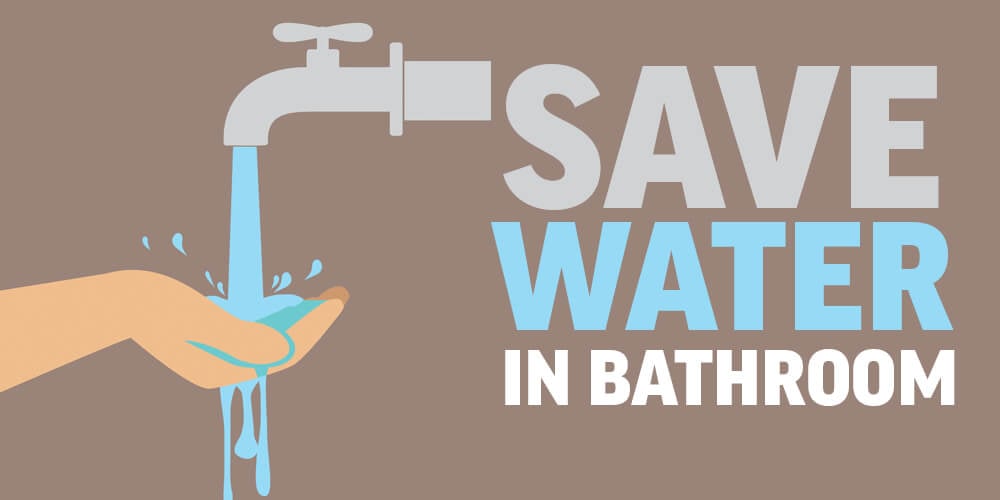
Global warming and the world's water crisis are only getting worse by the day. With no real end in sight, it's time for us all to start saving water. And the best place to start is in our bathrooms.
While common advice like showering for less than 5 minutes or turning your tap off while brushing your teeth is great in theory, it's not always practical or feasible. But there are ways you can make your bathroom water-wise with just a few adjustments.
Water Efficient Shower Head
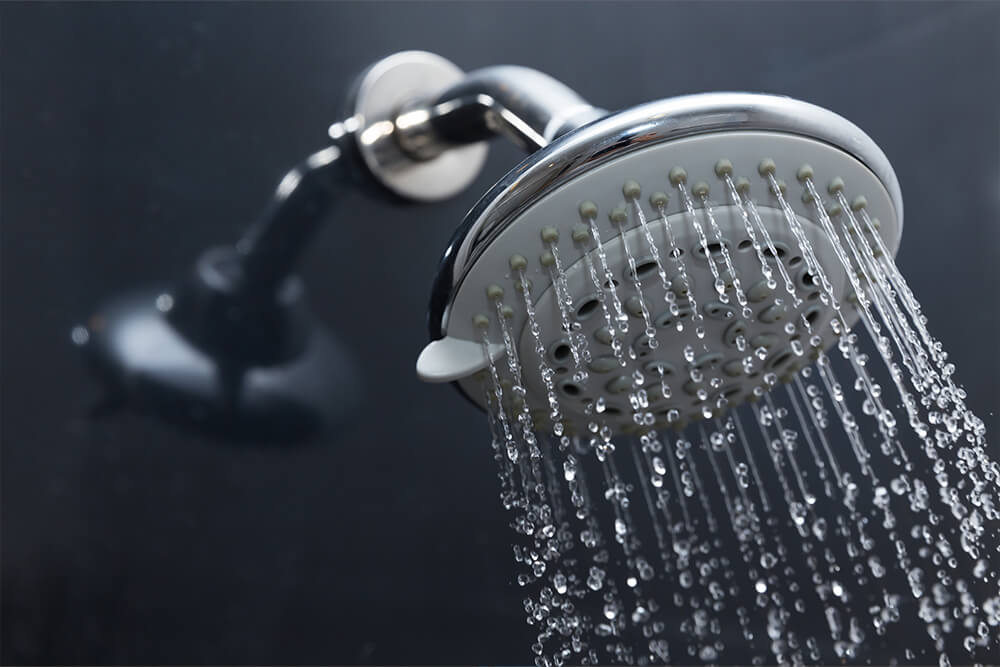
A water-efficient shower head is possibly the best way to save water in the bathroom, with some rating of water-efficient showerheads using more than 50% less than their traditional counterparts. This can also be a bit of a difficult topic to discuss to when it comes to rating systems, there is no one specific classification used by all manufacturers.
There is the AA rating, which includes from AA to AAAA water efficiency ratings. The Low Flow rating, which promises incredible efficiency but hardly ever specifies exact figures. The WELS rating system, which is a lot more informative, but with the other being less so, it can be difficult to cross-compare.
This list could go on to no point, there is only one number that actually matters.
When looking into the efficiency of a showerhead, the only number you should look for is liters per minute or LPM.
Older showerheads have a flow rate of on average of 20 LPM, some ranged up to 30 LPM, while others were more conservative at 15 LMP. We can consider this 20 LMP our base number to improve upon. The goal is generally less than 10 LMP, with below 6 LPM being a fantastic water efficiency. Water efficiency is the ideal goal, the lower, the better.
With this added level of water efficiency being cheap and readily available, it raises questions as to why more people do not make use of water-saving showerheads. The simple answer is, they have not tried a good one.
People often feel that less water may detract from the relaxing experience of having a nice, hot shower. This has been the case with some older, poorly designed showerheads. With modern well-designed showerheads, your experience is virtually the same as the older high flow showerheads, only using less water.
Before heading out to buy a new water-efficient showerhead, there are a few factors to consider.
Water pressure - Water-efficient showerheads usually need more pressure than traditional showerheads to give the same good experience. A shower head needing 1 bar of pressure is common ground. Be sure to check that your water system supplies the needed pressure for the shower head you want to buy.
Shower head layout - A shower is a personal preference. Some people like a smaller stream of high-pressure water, while others like a large area like rainfall. Go into purchasing a shower head with a clear vision of what you want, as the wrong spray pattern may leave you feeling disappointed and revert to your old water-wasting showerhead.
Know the connection - Fortunately in the UK, 99% of homes will have a standard shower head fitting. This fitting is known as a ½ inch BSP or British Standard Pipe. If you have one of the outliers to the norm and a standard showerhead does not fit, fittings to alter your pipe size are fairly common and easy to buy and install.
Dual Flush Toilet
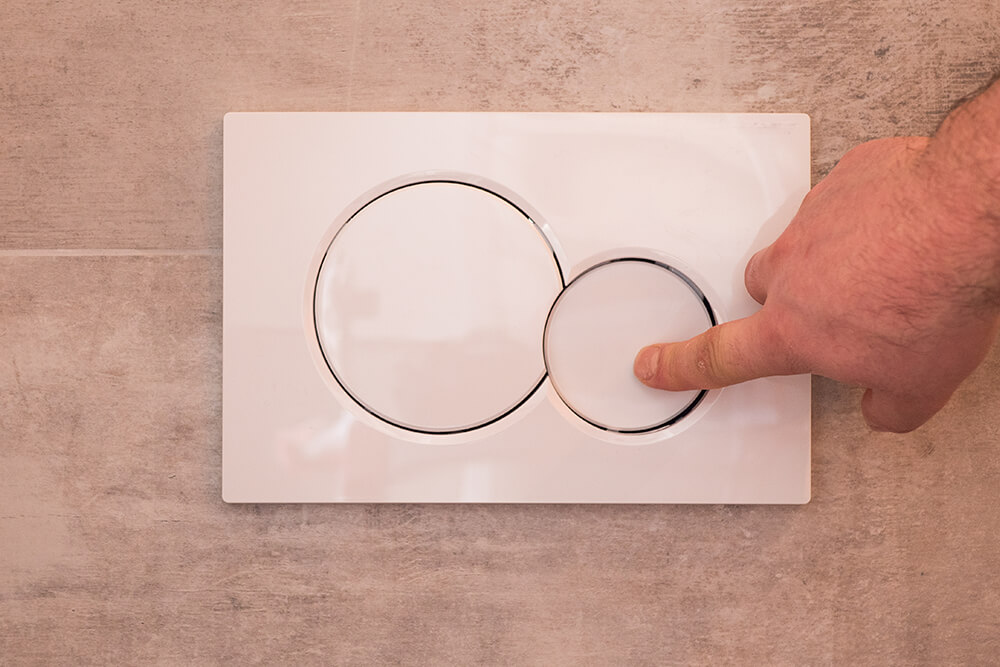
There is no getting around it, toilets use a lot of water to flush.
With the average person flushing a toilet 6 times a day, this amount of water used starts to add up quickly.
There are organizations that recommend cutting down on the number of flushes a day. And, while this can definitely help water consumption, not everybody is comfortable with it.
The most effective way to deal with this problem is a dual flush toilet, especially one with a low water usage. The principle of a dual flush toilet is simple. Two separate flush mechanisms, each tailored to release a different amount of water. A smaller flush for liquid waste and a larger flush for solid waste. Not to mention the fact that newer cisterns have smaller yet still adequately sized flushes in general.
Over a traditional cistern and flush mechanism, a modern dual flush toilet stands to save you more than 50% of the water your toilet was once using.
You could of could go all out and install a smart toilet, as this does the math for you, and can save water on every flush.
Grey Water Recycling
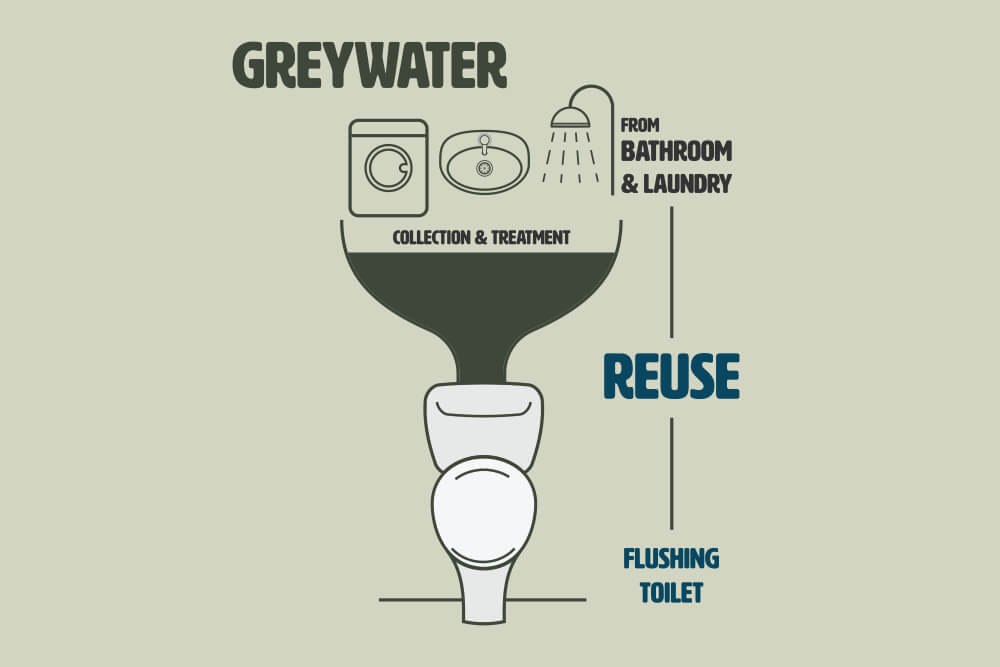
Recycling your greywater is a great way to save additional water in the home. While not feasible for everybody, for those who can, recycling grey water will make a definite difference to your household water usage.
Grey water is water that has been used in a shower, basin, and any other source which does not include any bodily fluid contamination. Most people who do recycle greywater have it pumped into a separate tank, which is then used to water a garden or even used to flush toilets.
It is important to note that this is only to be used if you put biodegradable substances down the drain. If you use any drain cleaner, it is likely to kill your garden or lawn.
Aerated Basin Taps
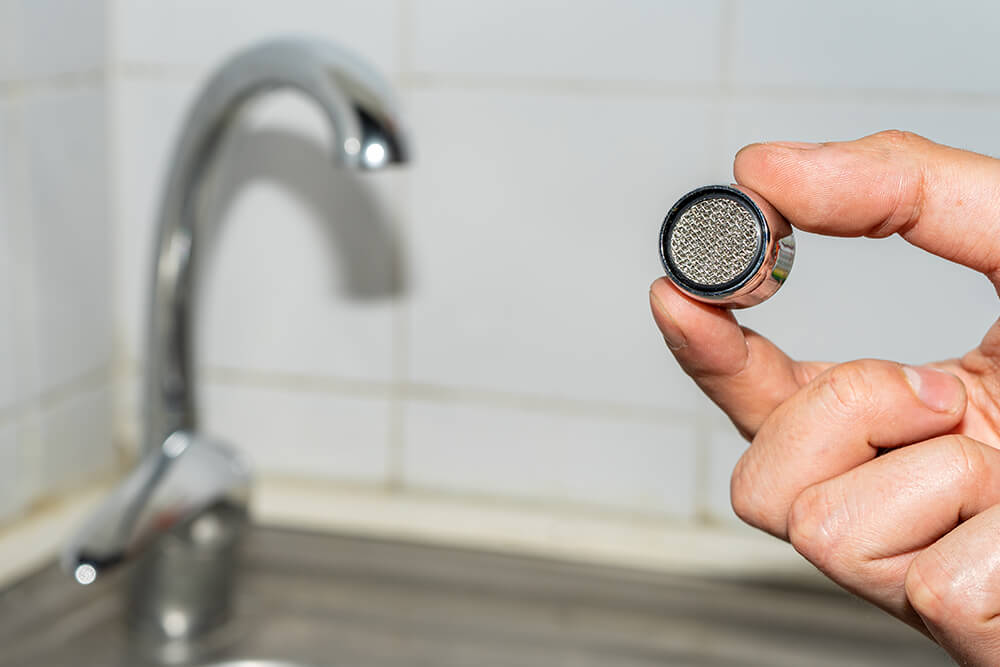
One of the smaller water savings in the bathroom, yet incredibly cheap and easy, is a faucet aerator. A faucet aerator limits the flow of water and aerates the water, allowing for better coverage and flow. This translates to less than half the water being used, while still feeling like a lot of water.
A lot of modern taps come with restrictors or aerators built-in, so be sure to check your tap before buying a new aerator. This does not just apply to your basins in the bathroom, but every tap throughout the house. Even the hose pipe used to wash your car could save a lot of water with the right fitting on the end.
Automatic Sensor Tap
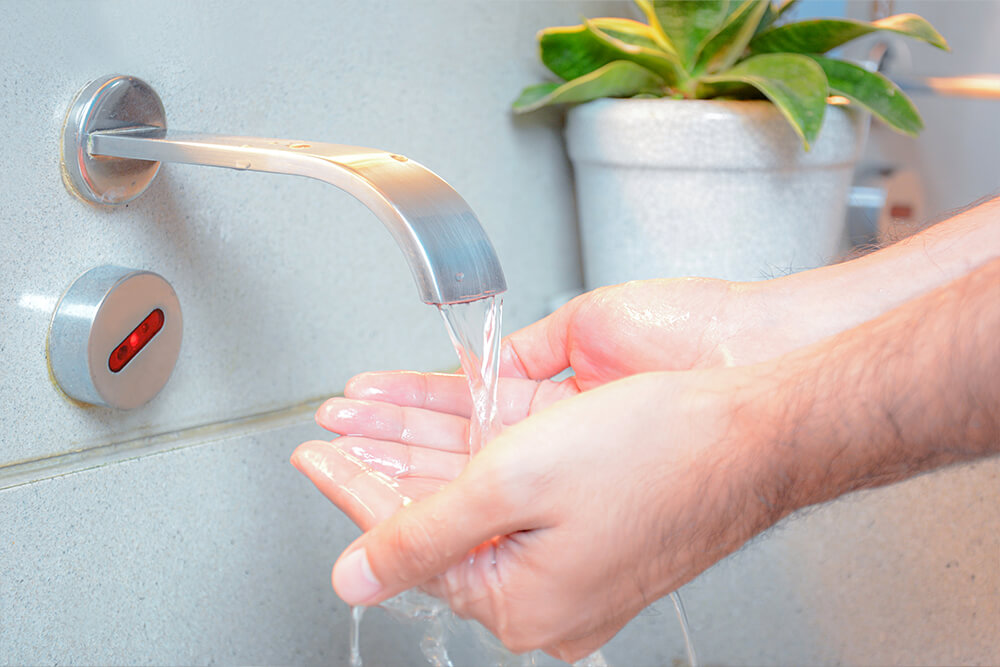
One of the most common tips for using less water in the bathroom is to turn off the water while you brush your teeth or while lathering your hands with soap. Great in theory can be a bit more difficult while actually washing your hands, provided you remember to do it in the first place.
Automatic taps are here to save the day.
Installing an automatic sensor tap allows you to put your hand in front of it and receive 5 seconds of water, the timer may vary depending on the particular automatic tap. This timed element forces you into good habits of saving water without ever having to open or close a tap yourself.
It may seem excessive and for most it likely is, but if you are remodeling your bathroom and need new taps anyway, automatic taps may be a great addition for you. They are aesthetically pleasing, they feel modern, and they help save water, automatic taps are a great addition to any bathroom.
Bath Size
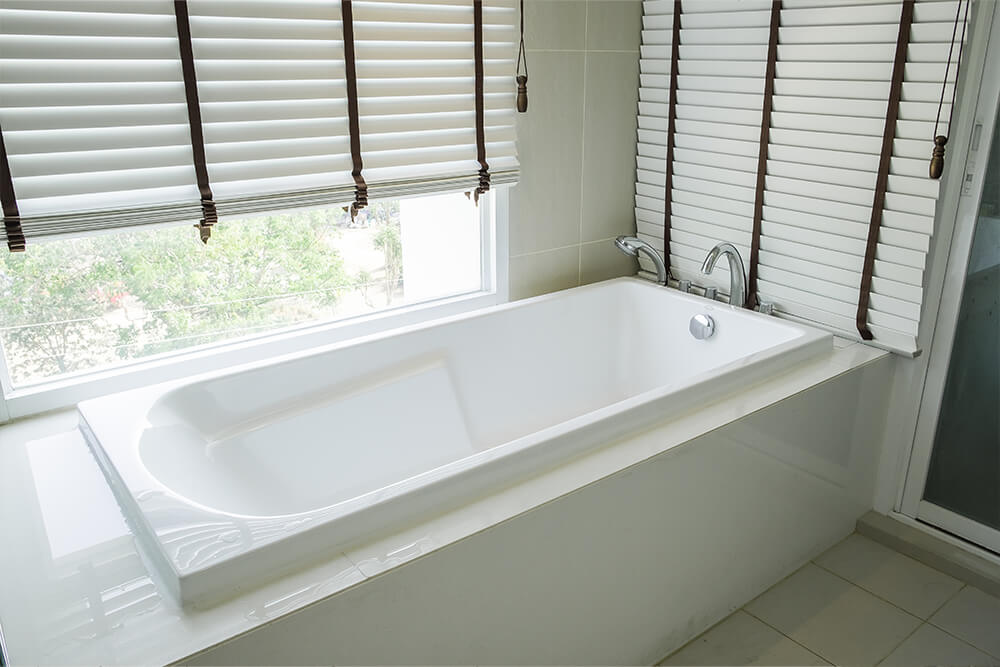
As much as showers save an incredible amount of water over a bath, some people still like bathing, and there's nothing wrong with that!
While it is best practice to limit using a bath where possible, having a bath is still a great form of relaxation for many people. Unfortunately, there is very little that can be on the surface to lower the water usage of a bath, limiting the amount of water in a bath can detract from the relaxing experience.
The most realistic way to decrease the amount of water used in a bath is to cut down on the size of the bath.
When you remodel your bathroom and need to replace your bath, don't buy the biggest bath available. Buy a bath according to your body size. Filling up a bath the size of a hot tub every time you would like to have a bath is simply wasteful. A smaller bath in which you are still comfortable could easily save 20% to 30% of the water used each time you have a bath.
Bathroom Maintenance
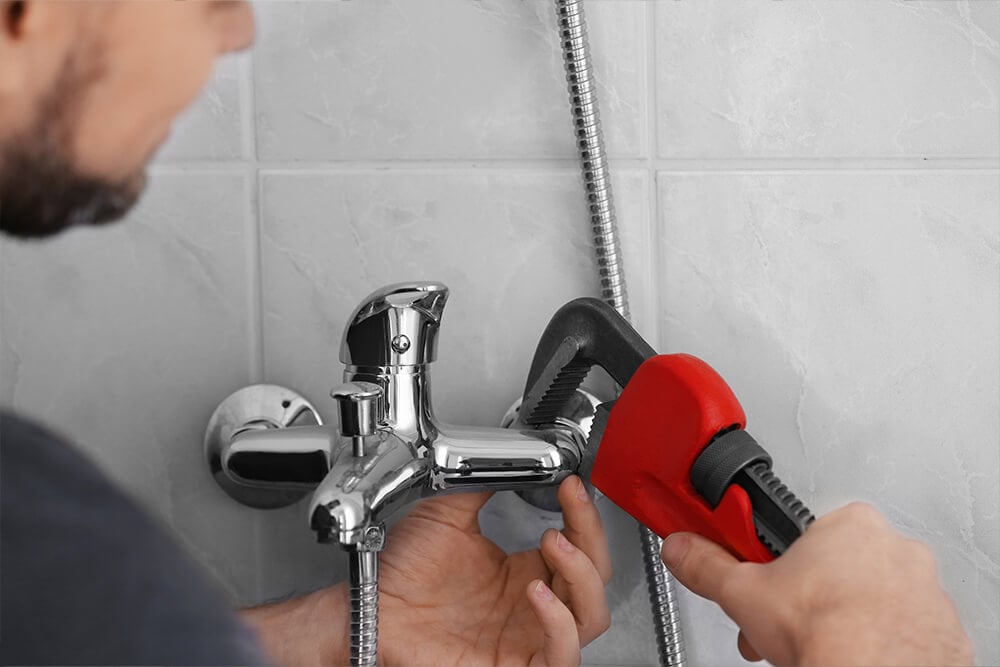
Regular maintenance of all of your bathroom fittings and fixtures is a great preventative measure to ensure that your bathroom will stay efficient.
A small leak on a tap may not seem like a big deal but it will add up to a large amount of water over time. Fixing smaller leaks is a great way to minimize wasted water throughout your bathroom and home.
Recognising a leak in a basic or a shower is generally easy but spotting a leak in your toilet where the cistern mechanism is leaking into the bowl can be very difficult.
A small tip in finding a leak in your toilet system is to mix some food coloring into the cistern water. If the color appears in the bowl without you having flushed, you have a leak. Fixing leaks as soon as they come up will be large water saving in the long run.
Saving water in your bathroom is really quite simple. A few changes can make a huge difference in reducing water waste. And, if we all do so, these changes add up to big ones for the planet.













